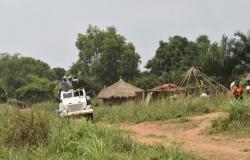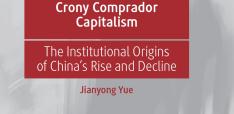Who you Gonna Call? Engaging ‘Public Authorities’ for Rapid Crisis Responses

Tom Kirk explores how World Vision analyses power and politics in a crisis to design humanatarian responses.
In 2014, World Vision’s Johan Eldebo and colleagues set about designing a tool for conducting rapid, yet socially grounded contextual analyses in the middle of escalating crises. The team’s big idea was to systematise and scale up the informal ways that information was being gathered in such places. The result was the ‘Good Enough Context Analysis for Rapid Response’ tool or GECARR, for short.
In practice, GECARRs rely on the relationships and reputations World Vision and its partners have with organisations and people that can tell them what is happening on the ground, who is driving it and what might happen next. To collect data rapidly in often difficult circumstances, informants and focus groups are asked eight simple questions about their situations. Each is road tested beforehand so they do not put respondents in danger. Their simplicity also enables insights to be gathered from children caught in unfolding crises.
This approach helps GECARRs to quickly unearth the micro- power and -politics of the places under analysis, with the aim of better responding to their humanitarian needs. For example, the team investigating the rise of violence in 2017 in Kasai, the Democratic Republic of the Congo, found that many chiefs had lost their legitimacy because they were encouraging youth to join the rebellion. In contrast, pastors and priests were considered by communities to have retained their influence due to providing vital services. This differed from the perception among more removed informants that the Catholic Church had lost influence in recent years. It also suggested to the GECARR team that local religious leaders could play a mediating role and help to unite communities should the conflict abate.
 GECARRs don’t only extract data, they also use World Vision’s contacts to facilitate the processes themselves. Last year this was demonstrated along the Colombian – Venezuelan border where it was believed the flow of displaced people was about to substantially increase. The GECARR team used World Vision’s standing with church leaders in the capital to contact local branches. Pastors provided buildings for them to work from, arranged volunteers to help with data collection and put them in touch with refugees’ organisations able to provide access to communities. These organisations have since helped to implement programmes responding to the crisis.
GECARRs don’t only extract data, they also use World Vision’s contacts to facilitate the processes themselves. Last year this was demonstrated along the Colombian – Venezuelan border where it was believed the flow of displaced people was about to substantially increase. The GECARR team used World Vision’s standing with church leaders in the capital to contact local branches. Pastors provided buildings for them to work from, arranged volunteers to help with data collection and put them in touch with refugees’ organisations able to provide access to communities. These organisations have since helped to implement programmes responding to the crisis.
GECARRs also draw upon World Vision’s contacts to help analyse their findings and validate conclusions. Shortly after returning from the field, GECARR team leads, representatives from local communities, faith leaders, civil society organisations, and other INGOs, including the UN, hash out three likely scenarios for the future of the context under study. They include trigger points that indicate when a crisis is moving towards one or another scenario. These exercises have often proved to be eerily accurate, as when GECARR researchers in the Central African Republic’s were evacuated as a proposed trigger point occurred during their work.
During a recent GECARR review in Zimbabwe several principles underpinning the tool’s success emerged:
Iterations – The GECARR has gradually evolved, drawing upon the inputs, trials and adjustments of 100s of participants and practitioners.
Timely – GECARRs take around 3-4 weeks from planning to a completed report. This allows them to used in the short decision-making windows around rapid onset crises.
Simplicity – Simple questions help to reveal people’s opinions, hopes and fears, and allow data collection teams to be trained within a day or two.
Public Authorities – GECARRs draw upon the knowledge, skills and networks of what the LSE CPAID research center calls ‘public authorities‘ – those outside the state that govern and provide services in difficult, often violent and conflict-affected, contexts. They lend credibility to their reports and, in some instances, participate in the responses they lead to.
Actionable Reports – The typical report is only 6-10 pages long, follows a standard template and includes scenarios that help humanitarians get to grips with the problem and its potential solutions.
As the GECARR has evolved, others have taken an interest. Of the 26 undertaken to date 6 have been conducted with agencies such as Mercy Corps and Oxfam. The START Network of humanitarian organisations has also become a partner. With a mission to move the sector towards proactive interventions and to counter the media’s ability to dictate responses, they will fund GECARRs to raise emerging or overlooked issues up the international community’s agenda.
So, what’s next for the GECARR? Participants in the review agreed the emphasis should be on refining an already proven product, rather than any major additions or an overhaul. Indeed, they worried about what would happen should a consultant or ‘expert’ be let loose on the tool.
They also felt that interagency GECARRs are the gold standard, as they add further reach and credibility to the process. Nonetheless, participants felt that there can be hesitancy within INGOs over sharing networks and resources, and sensitivities around what final reports say. The challenge, then, is to create a humanitarian system that supports the intimate levels of cooperation needed for successful GECARRs.
In my opinion, GECARRs also hold lessons beyond the humanitarian sector. Most importantly, they should encourage others to see public authorities as valuable sources of information and change in the difficult places they work.
Tom was in Zimbabwe as part of a wider project undertaken with Duncan Green to examine how Oxfam, World Vision and Mercy Corps understand, engage and involve public authority in their programming in FCVAS. The project is part of CPAID's research. This post first appeared on Duncan's blog.
Image credit: MONUSCO Photos via Flickr (CC BY-SA 2.0)


